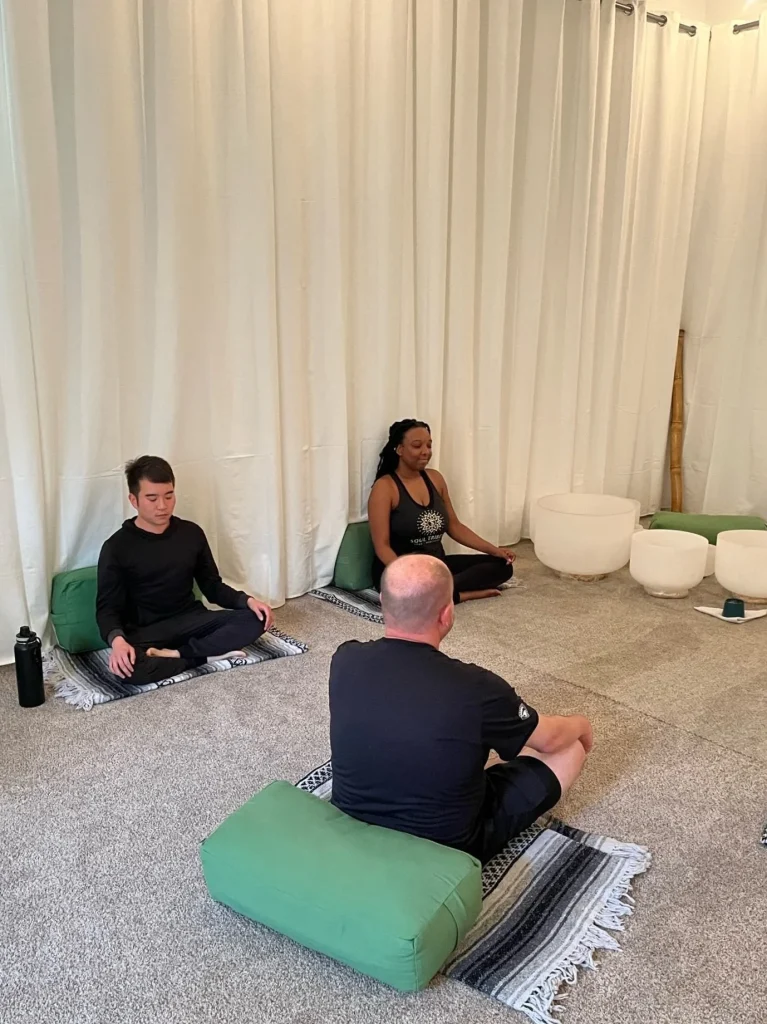The Symphony of Silence: Exploring the Effect of Sound on Bath Meditation

Exploring Bath Meditation: The Roles of Sound and Silence
As people navigate the complexities of modern life, the pursuit of inner peace and tranquil moments has gained significant importance. One evocative practice that has emerged in this context is bath meditation. This practice transcends mere relaxation, as it intertwines the use of sound and silence to create profound moments of insight and serenity.
Bath meditation goes beyond the sensory pleasure provided by warm water; it is an intricate interplay between acoustics and mindfulness. To elevate one’s meditative experience, it is essential to understand how different sounds and moments of silence can influence mental states and emotional well-being. Let’s explore some key elements:
- Natural Sounds: The environment plays a pivotal role in facilitating relaxation. Sounds like the gentle trickle of water or the harmonious chirping of birds not only soothe the senses but can also elevate an individual’s meditative state. For instance, in Nigeria, the cacophony of rustling leaves or the distant sounds of the savannah can create a rich backdrop for meditation.
- Instrumental Music: Many practitioners find that soothing melodies enhance their meditative journey. Traditional Nigerian instruments, such as the talking drum or the shekere, can infuse bath meditation with local flavors. The rhythms and harmonies inherent in these instruments can guide participants deeper into their meditative experience, allowing for a unique cultural connection.
- Silence: While sounds can enrich the practice, the embrace of silence is equally significant. Moments of quiet can amplify introspection and facilitate deeper self-awareness. Allowing the mind to settle amidst silence can lead to profound realizations and an enhanced understanding of oneself.
Delving into the symphony of silence and the resonances of sound reveals their collective effects on bath meditation. For example, studies have shown that engaging with natural sounds can lower cortisol levels, reducing stress and anxiety. In a country rich with cultural auditory experiences like Nigeria, the integration of local sounds, be it through nature or traditional music, not only enhances relaxation but also deepens cultural appreciation.
By exploring these elements, individuals can uncover new layers to their practice, enhancing their journeys toward emotional and psychological balance. This article serves as an invitation to embrace the rich potential of sound and silence within bath meditation, urging practitioners to experiment with various auditory stimuli to discover what resonates most with them. We invite you to embark on this enlightening journey, exploring how the simple act of immersing in water can evolve into a profoundly transformative experience.
RECOMMENDED: Check out this similar article

The Power of Natural Sounds in Bath Meditation
In the vibrant tapestry of Nigeria’s culture, nature’s orchestra offers a wealth of auditory experiences that can deepen the practice of bath meditation. The soft murmur of a flowing stream, the delicate rustling of leaves, or the subtle hum of insects creates a harmonious environment conducive to relaxation and self-exploration. These natural sounds not only provide a soothing backdrop but also evoke feelings of connectedness to the environment—a vital aspect of meditation that encourages mindfulness and presence.
Scientific research underlines the benefits of these natural soundscapes. Studies indicate that exposure to nature sounds can significantly reduce stress and anxiety levels. For instance, a study published in the Journal of Environmental Psychology found that listening to natural sounds effectively lowers cortisol levels, which are often referred to as the “stress hormones.” This connection becomes particularly relevant in busy urban areas of Nigeria, where residents may seek a brief retreat from the hustle and bustle of city life.
Recreating these natural settings during bath meditation can be transformative. Here are some suggested sounds to incorporate:
- Water Sounds: Consider recording or playing ambient sounds like water flowing, raindrops tapping on rooftops, or gentle waves lapping against the shore. These sounds can evoke feelings of calmness and tranquility.
- Animal Sounds: The rhythmic calls of native birds or even the distant sounds of wildlife can enrich the atmosphere. For example, the melodious tunes of the African grey parrot or the soothing croaks of frogs can enhance the overall sensory experience.
- Wind Sounds: The gentle whistle of the wind through trees creates a serene backdrop, inviting listeners to let go of their worries and embrace the moment.
By integrating these natural elements, practitioners can create an immersive experience that elevates both their physical and mental states. The warmth of bath water combined with the tranquility found in nature’s soundscape forms a potent combination that encourages deep relaxation and introspective thought. Furthermore, for those who may not have immediate access to natural surroundings, utilizing online resources or apps can bring these sounds into one’s own bathing ritual, making it easier to establish a serene environment.
Cultural Instruments Enhancing Bath Meditation
Incorporating local musical instruments adds a dynamic layer to bath meditation, allowing practitioners to fuse cultural appreciation with their mindfulness practices. Traditional Nigerian instruments, such as the talking drum and shekere, hold the potential to resonate deeply within the meditative space. The unique tonal qualities and rhythmic patterns of these instruments can guide practitioners deeper into a state of relaxation, making each bathing session not merely a cleansing routine, but also a cultural journey.
The talking drum, with its ability to mimic human speech, can provide a captivating auditory experience, reflecting the rich heritage of communication through sound. The entrancing beats can create a rhythmic ambiance conducive to meditation, encouraging participants to connect with their inner selves and the roots of their culture simultaneously. The addition of such elements invites a new layer of experience, illustrating how cultural sounds can transform a routine practice into a profoundly personal journey.
| Advantage | Details |
|---|---|
| Enhanced Relaxation | The integration of soothing sounds in bath meditation promotes deep relaxation, easing muscle tension. |
| Improved Focus | Thoughtfully curated soundscapes help elevate mindfulness, enhancing the overall meditative experience. |
As we delve deeper into the concept of bath meditation, it becomes evident that sound plays a pivotal role in shaping the experience. The *sound of water*, combined with gentle melodies, can transport individuals to a realm of tranquility, transforming an ordinary bath into an oasis of serenity. Studies have shown that the right frequency of sound can synchronize brain waves, allowing individuals to unlock deeper states of relaxation and meditation.Moreover, the use of instruments like Tibetan singing bowls or even recordings of nature can significantly amplify the meditative effects. These auditory elements immerse the practitioner in the moment, allowing thoughts to drift away and promoting a state of heightened awareness. The result is an enriching experience that not only nurtures the body but elevates the spirit, fostering a profound connection to *self and surroundings*. As the research on sound and its impact on meditation grows, the significance of creating a harmonious auditory environment cannot be overlooked in unlocking the full potential of bath meditation.
LEARN MORE: This related article may interest you
The Role of Silence in Enhancing Bath Meditation
While sound plays a pivotal role in bath meditation, the absence of sound—or silence—also serves as a powerful tool for enhancing one’s meditative experience. Silence creates a unique space where the mind can unwind, allowing practitioners to engage with their thoughts and emotions on a deeper level. By removing external noise distractions, individuals can harness the power of introspection and personal reflection, key elements for a successful meditation session.
In Nigeria, where daily life is often punctuated by vibrant sounds—whether from bustling markets, traffic, or lively street conversations—achieving true silence can be both rare and revitalizing. Embracing silence in bath meditation allows individuals to rediscover inner peace amid chaotic surroundings. Scientific studies support the notion that moments of silence can significantly lower heart rates and stimulate brain activity related to creative thinking and problem-solving. The Journal of Neuroscience published findings revealing that while music can elevate mood, silence provides the brain with a refreshing break, leading to improved emotional and cognitive clarity.
Creating a harmonious balance between sound and silence can further elevate the experience. For instance, practitioners can start their meditation sessions with ambient nature sounds, gradually transitioning to moments of complete silence. This shift can encourage greater self-awareness and facilitate a sense of grounding. Such an approach allows for a deeper connection to one’s breath and body, creating a synergy between the external world and internal awareness.
- Mindful Breathing: Use moments of silence to focus on your breath. Inhale deeply, allowing the body to expand, and exhale slowly, embracing a sense of calm. This practice can create a meditative rhythm that resonates throughout the bathing experience.
- Visualization Techniques: In the comforting silence, conjure images of serene landscapes, such as sunlit savannahs or tranquil beaches. These visualizations can deepen your meditation by fostering a strong mental connection to the purity of nature.
- Body Scan Meditation: While immersed in stillness, practice a gentle body scan. Start from the toes and move upward, mentally noting any tension or discomfort before releasing it. This technique can promote profound relaxation and self-awareness.
Furthermore, silence in bath meditation can also facilitate emotional healing. Many individuals carry emotional burdens that may not surface amid the noise of daily life. In the quietude of bath meditation, one can confront these emotions, acknowledge them, and allow for the possibility of release. This emotional processing can be especially significant in the Nigerian context, where conversations around mental health are gradually becoming more acknowledged and accepted.
As practitioners explore the dynamic interplay of sound and silence in their bath meditation rituals, they foster a sacred environment that nurtures both emotional well-being and cultural identity. By immersing oneself in the symphony of silence enriched by sound, one cultivates a unique path toward mindfulness, self-discovery, and healing. This enriching journey invites individuals to embrace their inner world, paving the way for a serene and transformative bathing experience.
RECOMMENDED: Check out this similar article
Conclusion
In concluding our exploration of The Symphony of Silence: Exploring the Effect of Sound on Bath Meditation, it becomes evident that both sound and silence play integral roles in shaping the meditative experience. While soothing sounds can enhance relaxation and foster emotional well-being, the profound impact of silence cannot be overlooked. For many in Nigeria, where life vibrates with a cacophony of sounds, the embrace of silence during bath meditation can serve as a much-needed respite, inviting individuals to delve into the depths of their thoughts and feelings.
The meditative process, enriched by a careful balance of auditory experiences and quietude, encourages self-discovery and mindfulness. Practitioners who integrate moments of silence may find themselves more attuned to their inner landscapes, providing a pathway for emotional healing and personal growth. As silence lends clarity to muddled thoughts, it invites a deeper connection with oneself and nature, cultivating a serene environment for reflection.
Furthermore, the traditional narrative surrounding mental health in Nigeria can find solace in these practices. Encouraging a conversation around silence and its healing properties might pave the way for more profound societal recognition of emotional wellness. The journey into the symphony of silence during bath meditation not only promises personal transformation but also aligns with a broader cultural awakening towards mindfulness. Ultimately, this exploration inspires all to carve out moments of tranquility amidst the chaos, thereby nurturing both the mind and spirit. As we continue to uncover the vast potential of our inner silence, we may find new pathways toward peace, clarity, and holistic well-being.


